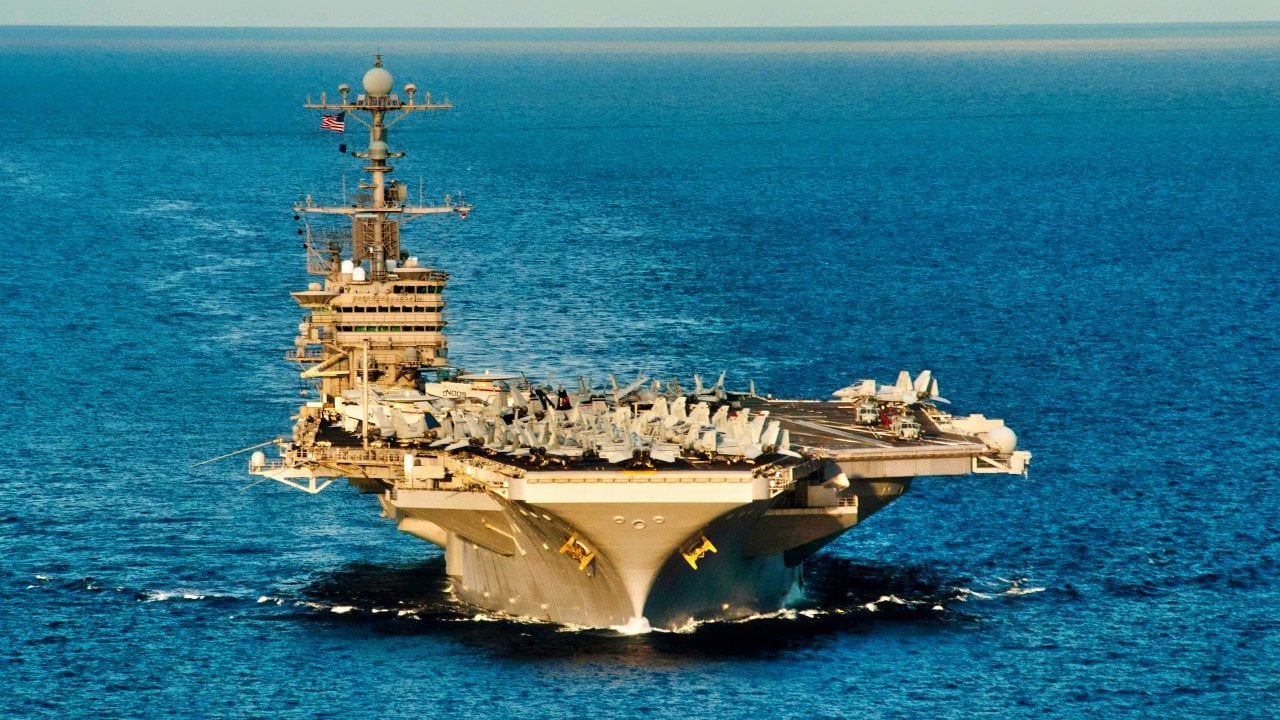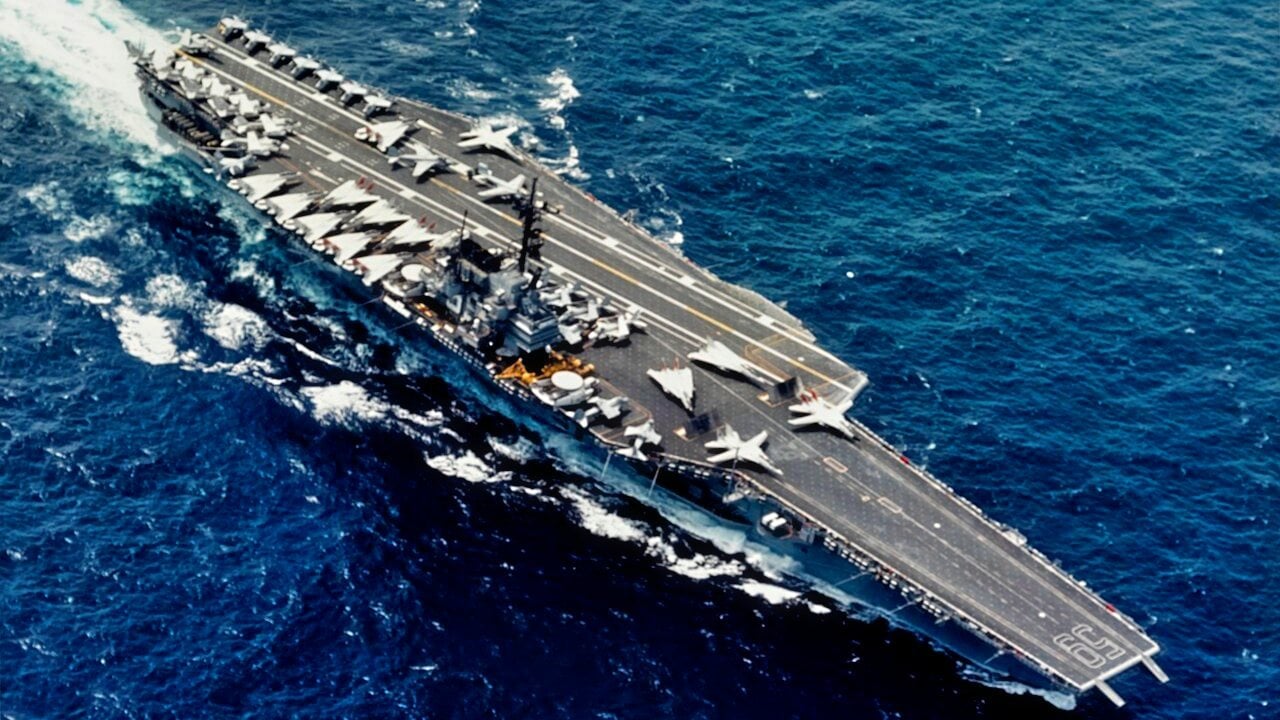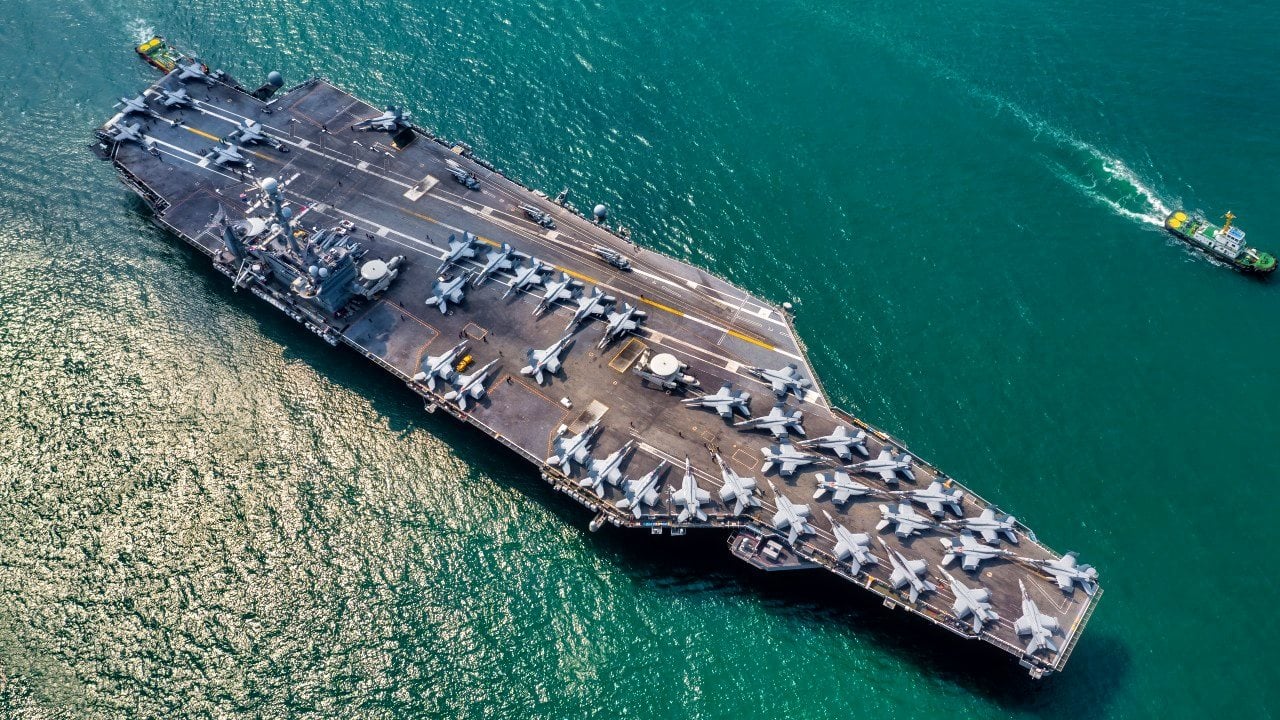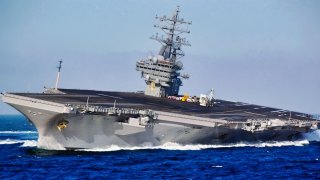Why You Don't Ever Want to Sink a Nuclear Powered Aircraft Carrier
Today, over 160 ships use nuclear power, including the U.S.'s 10 Nimitz-class carriers. The ecological impact of sinking such vessels in wartime is significant.
Summary and Key Points: Today, over 160 ships use nuclear power, including the U.S.'s 10 Nimitz-class carriers. The ecological impact of sinking such vessels in wartime is significant.

-While the USS Thresher's wreck showed no environmental harm, the Soviet Union's mishandling of nuclear waste, leaking 600,000 cubic meters into the Barents Sea, highlights potential risks.
-Rising geopolitical tensions necessitate careful consideration of the ecological consequences of sinking nuclear-powered carriers.
The Ecological Risks of Sinking Nuclear-Powered Carriers
The first nuclear-powered submarine set out to sea nearly seven decades ago. The USS Nautilus (SSN-571) initially launched in 1954, and she soon became the first submarine to complete a submerged transit of the North Pole. This revered vessel was able to remain submerged for far longer than her diesel-electric powered predecessors.
In the decades to follow, this energy source saw wider use in the naval arena. Today, more than 160 ships are powered by more than 200 small nuclear reactors across the globe. The U.S. has by far the largest fleet of nuclear-powered aircraft carriers, with 10 Nimitz-class ships and one Gerald R. Ford-class vessel in service today.
The strategic value of the aircraft carrier was perhaps best exemplified during the Second World War. The true combat power of these floating airports was realized after Japan’s December 1941 attack on Pearl Harbor. As aviation continued to advance, the carrier became the center point of modern combat fleets due to its versatility, mobility, and autonomy.
As more carriers and other nuclear-powered vessels are introduced, the ecological impact of their potential destruction in wartime should not be overlooked.
Previous Sinkings of Nuclear-Powered Vessels
Although a nuclear-powered aircraft carrier has never been sunk, nine submarines powered by nuclear energy have been destroyed either by accident or scuttling. Perhaps the most well-known sinking of a U.S. submarine is that of the USS Thresher. Designed in the early days of the Cold War to detect and take out Soviet submarines, the Thresher was considered to be the quietest and fastest vessel to enter service with any navy. On April 9, 1962, the submarine conducted trials during the day and submerged overnight, moving toward the coast of Massachusetts. The next morning, the Thresher successfully re-established communications with the Penguin-class USS Skylark submarine rescue ship and continued her deep-sea trials.
As the Thresher dove slowly in a circular pattern toward the bottom of the ocean, the Skylark received an alarming message. The Thresher had reached a depth of roughly 1,300 feet and noted: “Minor difficulties. Have positive up-angle. Attempting to blow.” Another unclear communique was received which included the number 900. The submarine’s remains were eventually discovered.
What About Ecological Damage?
U.S. Navy experts assert there is no sign that the 50-year-old wreckage of the USS Thresher – including its nuclear propulsion system – created an environmental hazard. As detailed by Foster’s Daily Democrat, “The Navy has tested the site six times, and each time confirmed that the environment is not being impacted by radioactivity from the sub's propulsion system.” The most recent study, published in 2011, again showed the Thresher wreckage has had no discernible effect on radioactivity in the environment.

This one case study does not reflect the outcome of every incident involving nuclear energy, however. The Soviet Union also pursued the construction of nuclear-powered submarines during the Cold War. The Arctic port of Murmansk and the military bases nearby became the focal point of the Soviet nuclear navy and a site where highly radioactive spent fuel was held. During this period, 600,000 cubic meters of toxic water leaked into the Barents Sea from a storage pool at Andreyeva Bay. Although numerous nations embarked on a sweeping clean-up in an effort to control contamination, an exorbitant amount of nuclear waste was dumped at sea. In fact, a 2019 study found 18,000 radioactive objects in the Arctic Ocean.
The Wartime Sinking of a Nuclear-Powered Carrier
While the destruction of a nuclear-powered aircraft carrier would certainly look different than a sunk submarine or a site where spent fuel has leaked, the potential ecological ramifications are of equal concern. Rising geopolitical tensions in Eastern Europe, South Asia, and the Middle East suggest that the prospects for a future kinetic war are increasing. A naval power struggle between Beijing and Washington in the South China Sea is quite plausible in the near future. The consequences of a nuclear-powered carrier sinking in conflict deserve close consideration.

About the Author: Maya Carlin
Maya Carlin, National Security Writer with The National Interest, is an analyst with the Center for Security Policy and a former Anna Sobol Levy Fellow at IDC Herzliya in Israel. She has by-lines in many publications, including The National Interest, Jerusalem Post, and Times of Israel. You can follow her on Twitter: @MayaCarlin.
All images are Creative Commons or Shutterstock.
From the Vault
Russia Freaked Out: Why the U.S. Navy 'Unretired' the Iowa-Class Battleships
Battleship vs. Battlecruiser: Iowa-Class vs. Russia's Kirov-Class (Who Wins?)


